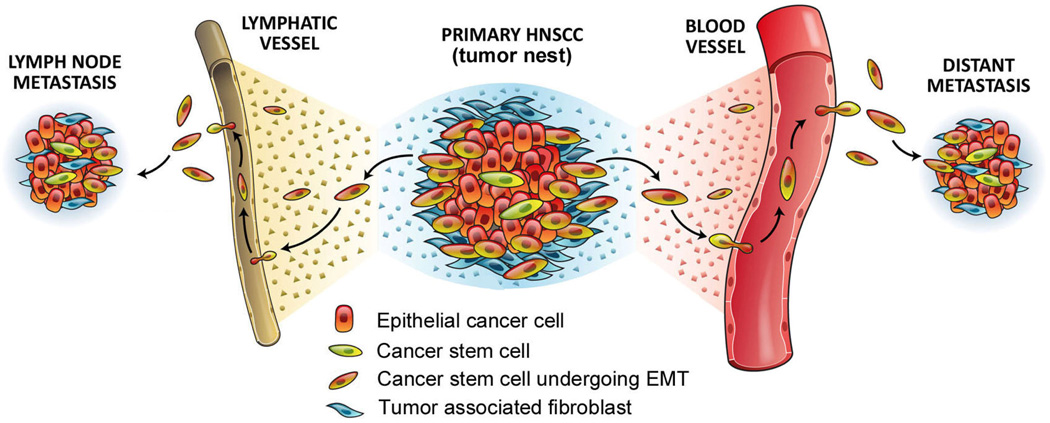Figure 3.
Diagram depicting a putative model for the role of EMT and acquisition of cancer stem cell phenotype in the metastatic spread of HNSCC. The epithelial tumor is a complex organ that contains carcinoma cells, fibroblasts, immune cells, blood vessels, lymphatics, and a small population of cancer stem cells. Through EMT, cancer stem cells become invasive and acquire characteristics that enable them to metastasize to regional lymph nodes (through lymphatic vessels) and to distant sites, such as lungs (through blood vessels). Notably, it is unlikely that every single cancer stem cell has the ability to generate a viable metastasis.

